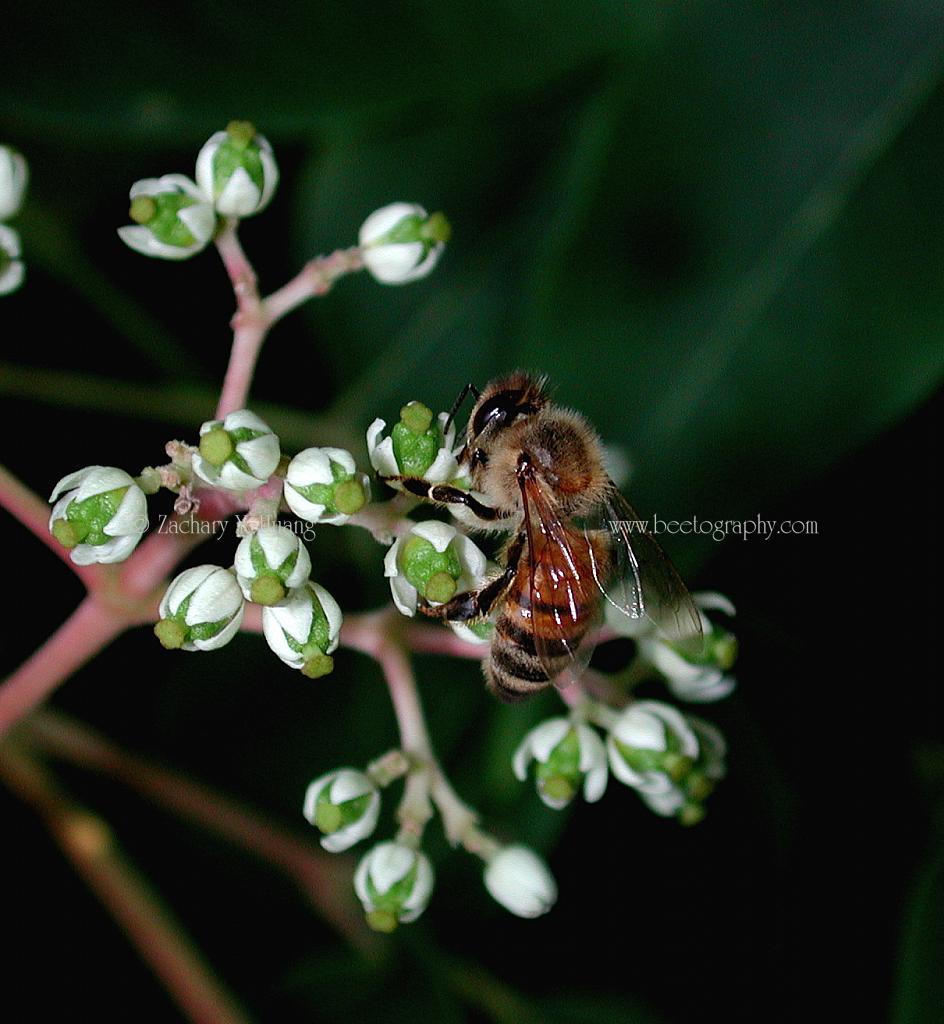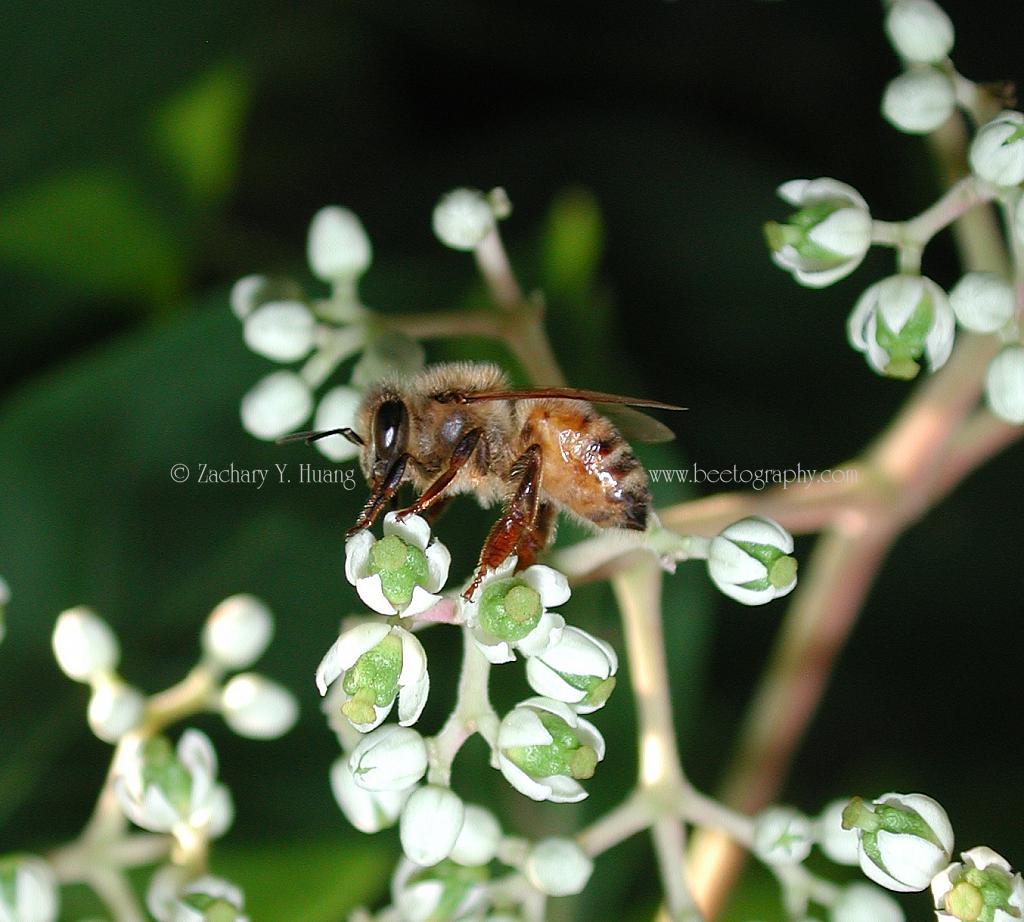Zachary Huang, Michigan State University
Prof. G. Ayers told me today that the huge bee bee tree is blooming again and is full of bees. so I brought the 3 visitors (all from China) to see them. Although only about 5% of flowers were blooming, each inflorescence had 3-5 bees looking for that open floret to drink the nectar. The flower will first bloom as male flowers (with anthers containing pollen), then the females flowers will bloom later. I am not sure how two different trees could cross pollinate if both blooming in this same order. Perhaps they overlap long enough? or perhaps it is self pollinated?
The Latin name for this flower is Evodia danielli, in the family Rutaceae (the same family as oranges and lemons). It is introduced from South China.
I did not have my camera with me today, so here are a few old shots (Aug 2, 2008, so the trees caught up even though our spring was 1 month behind, actually one week earlier).
1. I counted 16 bees on this photo!
2. Closeup of a bee on male flowers
3. Two dark bees and two yellow bees working on the same inflorescence:
4. It appears the bee is working for both nectar and pollen
5. A bee working on female flowers. can you see the difference? The middle thing that sticks out is the stigma (the part which receives pollen).
These were shot with a point and shoot digital camera (Nikon Coolpix 990), Aug 22, 2003, one year before I got my D70.

6. Another shot with female flowers.

Location: the single tree is near the entrance of the MSU Kresge Art Museum, south of Auditorium road.
A google map is below, the center of the map is approximate where the tree is situated.
I am traveling tomorrow and had tons of things to do, but I could not help but post this blog! I had three batches of photos from bee bee tree, but always want to get more and better ones.
I am hoping that I can take photos of some female flowers when I come back, Aug. 8.
